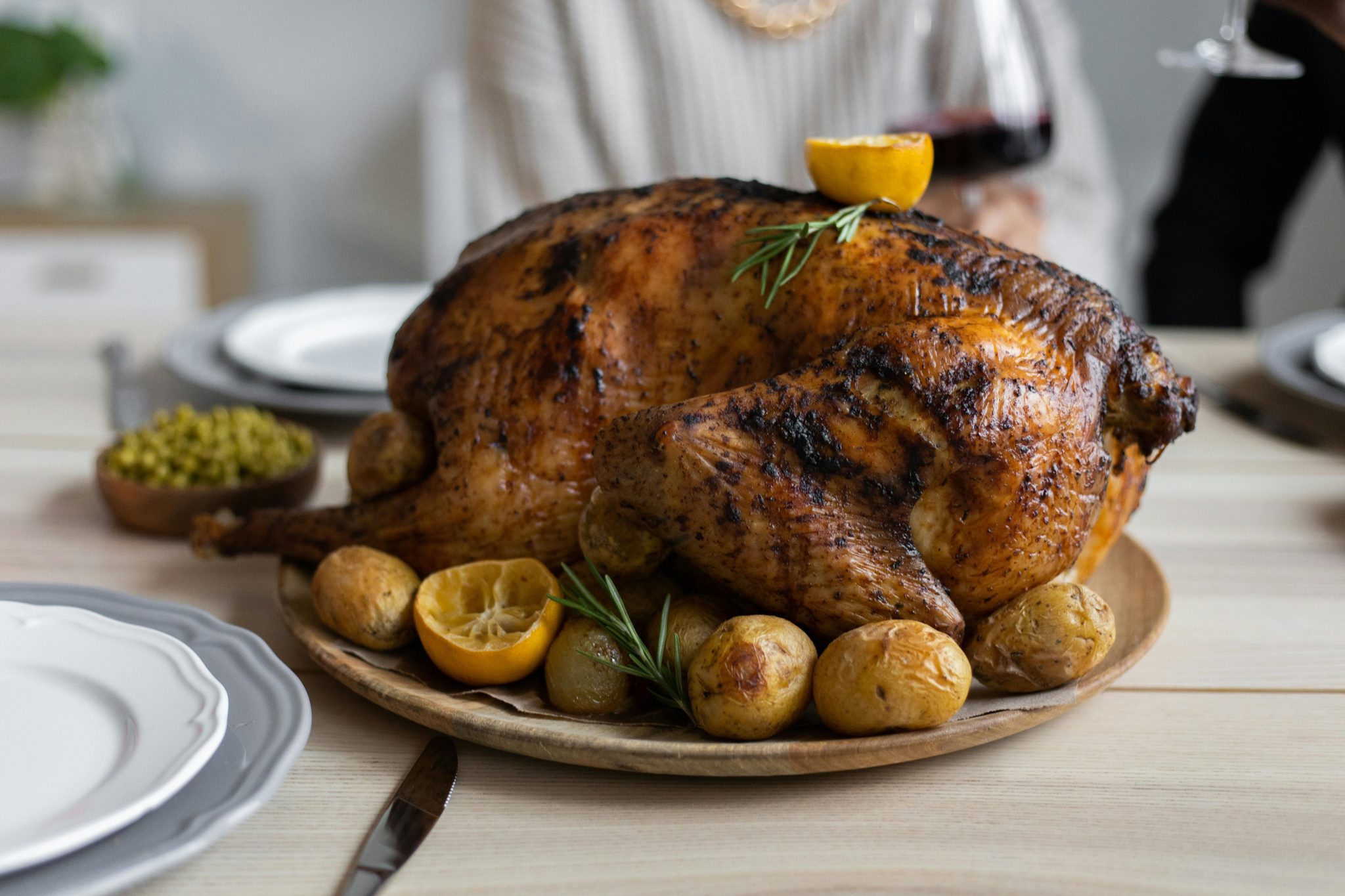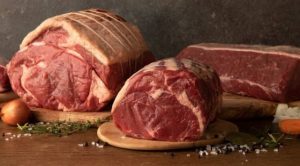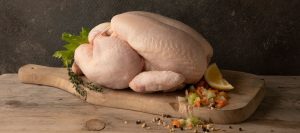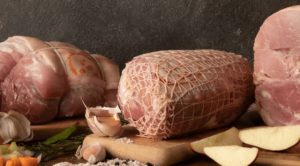
The Ultimate Guide to a Perfect Roast Dinner
There’s something undeniably comforting about a traditional roast dinner. It’s the epitome of hearty, homely cooking—a meal that brings together friends and family around the table during the colder months. Whether you’re a seasoned pro or a novice eager to master this classic, this ultimate guide will take you through every aspect of crafting the perfect roast dinner.

What is a Roast Dinner?
At its core, a British roast dinner is a celebration of simple, quality ingredients cooked to perfection. Typically served on a Sunday (hence the term “Sunday roast”), this meal revolves around roasted meat, usually beef, lamb, chicken, or pork, complemented by a variety of side dishes like roast potatoes, vegetables, Yorkshire puddings, and, of course, lashings of gravy.
When is the Perfect Time to Cook a Roast Dinner?
We looked at cities around the country to predict when the first roast of the year might take place based on average temperatures, vegetables in season and seasonal events. Based on our research, cities like Birmingham, Bristol, Edinburgh, Glasgow, Leeds, Manchester might enjoy their first roast as soon as the weekend of 20th Sept – coinciding with the first day of autumn, and when temperatures are likely to fall into single digits (i.e. less than 10°C).
Other cities, like Cardiff, might enjoy their first roast on the weekend of 4th Oct – when temperatures hit below 10°C, and following events like Cardiff vs. Glasgow Warriors or the Cardiff Half Marathon.
Christmas is the ultimate day for a roast dinner, so based on when we will start cooking this seasonal dish the country has up to 13 weeks to perfect their roast ahead of Christmas lunch.
| City | Weekend of first roast | Weeks until Christmas |
| Birmingham | 20-22nd Sept | 13 |
| Bristol | 20-22nd Sept | 13 |
| Cardiff | 4-6th Oct | 11 |
| Edinburgh | 20-22nd Sept | 13 |
| Glasgow | 20-22nd Sept | 13 |
| Leeds | 20-22nd Sept | 13 |
| Liverpool | 11-13th Oct | 10 |
| London | 18-20th Oct | 9 |
| Manchester | 20-22nd Sept | 13 |
| Newcastle | 11-13th Oct | 10 |
| Norwich | 25-27th Oct | 8 |
| Nottingham | 11-13th Oct | 10 |
| Sheffield | 18th-20th Oct | 9 |
| Southampton | 4-6th Oct | 11 |
Choosing the Right Meat
The star of the show is undoubtedly the roast meat, and getting this right is key to a memorable dinner.
Beef
A roast beef dinner is perhaps the most iconic of all. Look for cuts like ribeye, sirloin, or for a more affordable option, topside. Ribeye is ideal for those who love their meat with a bit of marbling, ensuring juiciness and flavour. Sirloin offers a good balance of tenderness and taste, while topside is a leaner cut that benefits from slow roasting to keep it succulent.

Lamb
For a slightly sweeter, tender option, roast lamb is a fantastic choice. A leg of lamb is traditional, often studded with garlic and rosemary to enhance its natural flavours. If you prefer a more delicate texture, a shoulder of lamb, cooked low and slow, is unbeatable.

Chicken
Roast chicken is a family favourite, offering a more economical option without skimping on flavour. A whole bird roasted with lemon, garlic, and herbs under the skin will deliver moist meat and crispy skin—a winning combination.

Pork
Roast pork is all about the crackling. A joint of pork shoulder or belly, properly seasoned and roasted at high heat initially, will give you that golden, crunchy crackling we all crave. Pair it with a tangy apple sauce for a classic match.

Perfecting Roast Potatoes
No roast dinner is complete without perfectly crisp, golden roast potatoes. The secret? Start with the right spud. Maris Piper or King Edward potatoes are the go-to varieties in Britain due to their fluffy interior and ability to crisp up wonderfully.
How to Make Roast Potatoes
- Parboil: Peel and chop your potatoes into even-sized chunks, then parboil them in salted water for about 10 minutes until they’re just tender.
- Rough them up: Drain the potatoes well, then give them a good shake in the pan to rough up the edges—this is where the crispiness comes from.
- Hot fat: Heat your chosen fat in a roasting tray (beef dripping, goose fat, or even olive oil works well) until it’s sizzling. Carefully add the potatoes, turning them to coat in the hot fat.
- Roast: Place the tray in a hot oven (around 200°C/400°F) and roast for 45-60 minutes, turning occasionally, until the potatoes are golden and crispy.

The Role of Vegetables
A variety of vegetables not only adds colour but balances the richness of the meat and potatoes. Here’s a breakdown of classic choices:
- Carrots and Parsnips: These root vegetables are perfect for roasting. Simply toss them in a bit of honey and thyme before roasting alongside your meat.
- Brussels Sprouts: Love them or hate them, brussels sprouts are a staple of a roast dinner. For a modern twist, try roasting them with chestnuts and pancetta.
- Cabbage or Kale: Lightly steamed or sautéed with butter and garlic, these greens bring a welcome freshness to your plate.
- Cauliflower Cheese: A creamy, cheesy cauliflower bake is a comforting side that pairs beautifully with beef or pork.

Yorkshire Puddings
Yorkshire puddings are a must-have with roast beef but are increasingly served with all types of roast meat. These airy, crisp delights are made from a simple batter of flour, eggs, and milk.
How to Make Yorkshire Puddings
- Make the mix: The perfect Yorkshire pudding mix is equal parts, so mix 140g plain flour (this is about 200ml/7fl oz), 4 eggs (200ml/7fl oz) and 200ml milk in a bowl with a little salt and pepper. The batter should be smooth and slightly runny, similar to a pancake batter.
- Hot tin, hot fat: The key to perfect Yorkshire puddings is a hot oven and a smoking hot tin. Preheat your tin with a little oil or lard until it’s almost smoking before pouring in the batter.
- Quick bake: Pour the batter into the hot tin and bake in the oven at 220°C/425°F for about 20-25 minutes until risen and golden. The tip to perfectly risen Yorkshire puddings is to not open the door until they’re done, otherwise they’ll fall flat.
Gravy: The Finishing Touch
A roast dinner isn’t complete without a generous pouring of gravy. A well-made gravy ties all the elements together, enhancing the flavours of your meat and veg.
How to Make Gravy
- Meat juices: Start with the juices from your roasting pan. If there’s a lot of fat, skim some off, but leave a bit for flavour.
- Thicken: Stir in a tablespoon of plain flour to the pan juices and cook for a minute or two to make a roux.
- Add stock: Gradually add your stock (beef, chicken, or vegetable depending on your meat) while stirring, and bring to a boil. Let it simmer until it reaches your desired consistency.
- Season: Taste and adjust the seasoning with salt, pepper, and perhaps a splash of red wine or Worcestershire sauce for depth.
The Final Touches to Your Sunday Roast
Now that your roast dinner is nearly complete, it’s time for the finishing touches. Serve your meal with a side of homemade horseradish or mustard for beef, mint sauce for lamb, or apple sauce for pork. Don’t forget to warm your plates before serving—nobody likes a cold roast dinner!
Bringing it All Together
A British roast dinner is more than just a meal—it’s a tradition, a feast for the senses, and a chance to slow down and enjoy good food with great company. Whether you’re hosting a big family gathering or enjoying a quiet Sunday roast, mastering the art of the roast will ensure you deliver a meal that everyone will love.
Remember, the beauty of a roast dinner lies in its versatility. Once you’ve got the basics down, feel free to experiment with different meats, vegetables, and accompaniments. After all, a roast dinner is a personal affair—make it your own, and enjoy every delicious bite!
Check out our Christmas Dinner Timing Chart
Our Christmas Dinner Timing Chart helps you perfect your Christmas dinner, but it can be also used for your standard Sunday dinner.
Simply select your ingredients and a sit down time and it’ll give you a whole step-by-step guide!